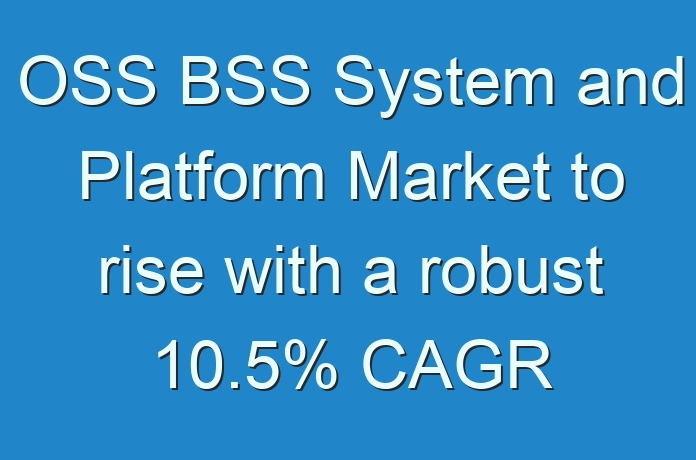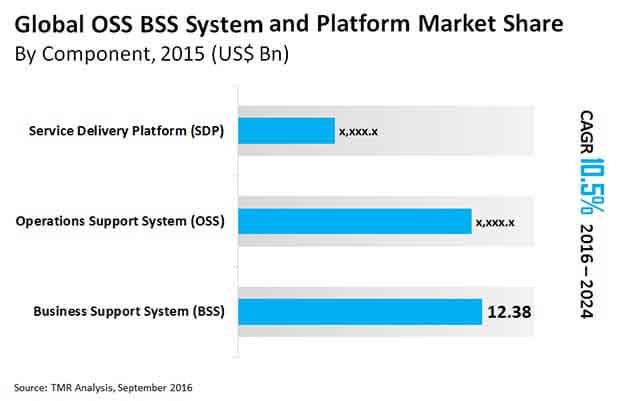
OSS BSS System and Platform Market: Snapshot
The global OSS BSS system and platform market is poised for strong growth in the coming years, driven mainly by the expansive telecommunication sector. The rising adoption of convergent billing systems and the growing demand for customer care services are also anticipated to significantly contribute to the OSS BSS system and platform market.
The opportunity presented by this market was pegged at US$29.11 bn in 2015 and is slated to advance at a CAGR of 10.5% from 2016 to 2024, to attain a market size of US$70.97 bn by the end of the forecast period.
Want to know the obstructions to your company’s growth in future? Request a brochure @ https://www.transparencymarketresearch.com/sample/sample.php?flag=S&rep_id=1402
Curbing the widespread adoption of OSS BSS systems and platforms are regulatory issues and difficulties in integrating them with existing systems. However, the roll-out of the new-generation operation systems and software (NGOSS) framework is expected to provide immense potential for growth to the players of OSS BSS system and platform market.

Service Assurance Solutions to Retain Dominance in OSS Market through 2024
Within the OSS market, the service assurance segment is expected to dominate the global market by 2024, followed by the service fulfillment solutions segment. The dominance of these services is attributed to the surging demand for consistent high-speed connectivity in Europe and North America. Moreover, several telecommunication regulators across the globe have formulated certain standards to comply with quality of service (QoS), which further propels these two segments.
The network monitoring and network designing segments, on the other hand, have been witnessing a rise in demand across the Asia Pacific, Middle East and Africa, and South America regions. This demand is attributed to escalating communications infrastructure across developing regions. The roll-out of augmented networks in Asia Pacific is expected to further propel the OSS market to expand at a strong CAGR of 10.7% from 2016 to 2024.
The BSS market was primarily led by the customer management solutions segment in 2015. However, revenue management is expected to surpass the market share of customer management solutions by the end of the forecast period. This development is mainly attributed to a decreasing average revenue per user (ARPU) and growing investments in communication infrastructures across major developing countries.
Rising Demand for Mobile Internet Propelling Demand for OSS BSS Systems and Platforms in APAC
North America was identified as the leading OSS BSS system and platform market, holding approximately one-third of the global market revenue in 2015. The growing number of telecom providers and mobile network operators in North America is seen as the prime factor driving the demand for OSS BSS solutions. In North America, the industrial scenario is mainly adjudged by the overall growth in the telecom and IT domain. Furthermore, favorable government regulations have strengthened the North America OSS BSS system and platform market.
Looking for exclusive market insights from business experts? Request a Custom Report
Asia Pacific is expected to witness high growth in terms of revenue during the forecast period owing to factors such as the rising demand for mobile internet, the falling ARPU for voice, intense competition, and an increased degree of convergence, necessitating the need for operational efficiency and innovation.
The growing number of subscribers and the rising demand for augmented services such as revenue and billing management have raised the prospects for OSS/BSS systems and platforms across the European telecommunication sector.
Leading players in the global OSS BSS system and platform market include Accenture Plc, Telefonaktiebolaget LM Ericsson, IBM Corporation, Amdocs Ltd., Tata Consultancy Services Limited, CSG Systems International, Inc., Oracle Corporation, and Hewlett-Packard Company.





